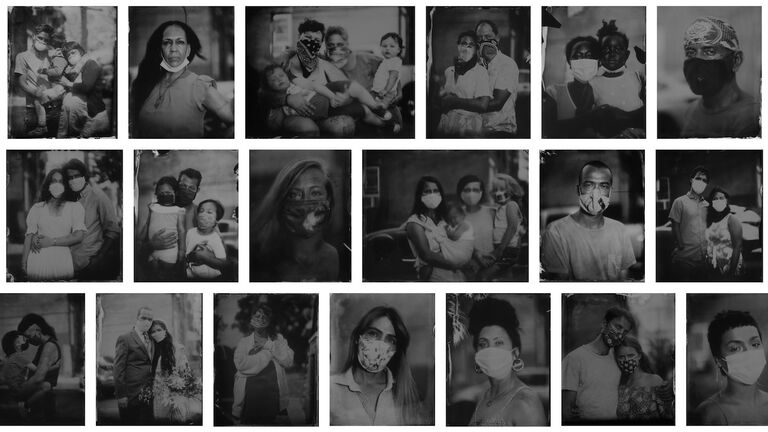
Alum Helen Maurene Cooper Documents the Pandemic with Wet Plate Collodion Portraits
Alum Helen Maurene Cooper (MFA 2007) was sitting on the front steps of her home in East Kensington, Philadelphia, when a woman walking her dog struck up a conversation. If not for the current pandemic, their neighborly chat would have been a scene out of ordinary, everyday existence. But this simple interaction—during a time when Cooper had been thinking deeply about the meaning of community—inspired Cooper to photograph her neighbors. For these portraits, she knew a simple smartphone or another digital method wouldn’t suffice, instead choosing to use the wet plate collodion (ambrotype) process, producing images that remind us of the historic significance of our current moment. Invented in 1851, this process involves coating a glass or metal plate with collodion and silver nitrate, and then loading it into a camera—leaving the photographer with roughly 15 minutes to expose and process the wet plate before it dries out. In a recent interview with Humble Arts Foundation, Cooper said, “There is also a morbid romance that collodion brings to a portrait of a person wearing a mask in 2020.”
Cooper has a long history of documentary photography, creating series for drag culture, Black and Latinx nail artists, and the Weeki Wachee Mermaid Show in Florida. For this new series, People of the Pandemic, Cooper wanted to document something that was “not only about living under pressure in the time of COVID, but the fabric of our ever-changing neighborhood.” The series is ongoing, with Cooper continuing to set up her 8x10 camera on the sidewalk and invite strangers and neighbors to participate in the intimate process of portraiture photography—all at a safe distance.
